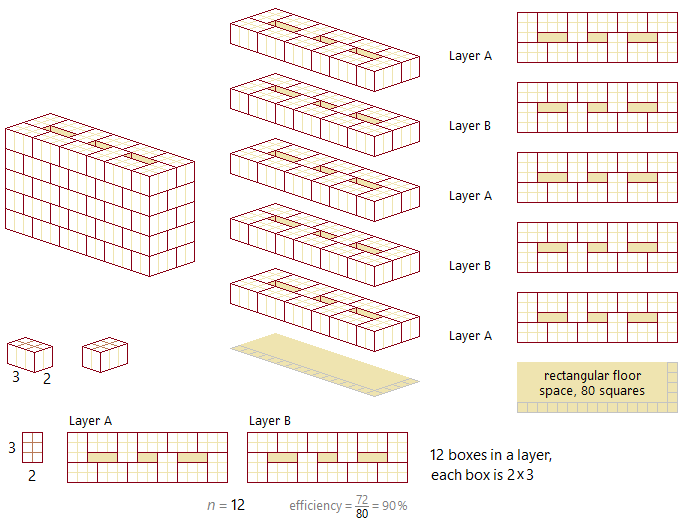This is about layering boxes, not about slaying them. We have 1,830 2×5 boxes to stack safely as 10 alternating contiguous layer patterns of 183 boxes each. Layers have identical silhouettes that fit squarewise on a rectangular 2,000-square floor. The pair of layer patterns is to be solved along with the floor’s dimensions.

Background and guidelines
Once upon a time in packing to move we had a supply of identical boxes. One challenge was, in a land of earthquakes and elbows, to stack full boxes stably on the garage floor. As width and length of a box had some irrational ratio, we came up with an amusing pattern of alternating layers (that turns out to be suboptimal). This layer pair is exemplified with 2×3 boxes.

We defined safe stacking as similar to bricklaying, where no internal abutments align between layers.
Back to 2×5 boxes of the present puzzle, here are safe layer pairs of 4, 6, 7, 8, 9 and 10 boxes. Each pair is annotated with how efficiently it uses rectangular floor space. Bounty to anyone who improves on these efficiencies or finds a safe layer pair of 5 boxes.

As an example of what to avoid as unsafe, a tempting pair of 6-box layers has internal abutments that align between layers.

How can safely alternating contiguous 183-box layers fit onto a 2,000 square-unit rectangular area?
